Effects of Storage Temperature on Postharvest Physiology of Amorphophallus cormifer Microbulb
2021-02-17WeifangLIBoWEIZifanLIUXianhaiZENGDenglangPAN
Weifang LI, Bo WEI, Zifan LIU, Xianhai ZENG, Denglang PAN*
1. Rubber Research Institute, Chinese Academy of Tropical Agricultural Sciences / Danzhou Investigation & Experiment Station of Tropical Crops, Ministry of Agriculture & Rural Affairs, Danzhou 571737, China; 2. College of Tropical Crops, Hainan University, Haikou 570228, China
Abstract [Objectives] The paper was to explore the optimum storage temperature of Amorphophallus cormifer microbulbs. [Methods] With A. cormifer as the raw material, the effects of different storage temperatures (4, 12 and 20 ℃) on postharvest physiology of A. cormifer during the storage period of 80 d were investigated. [Results] There was no significant difference in starch content among the treatments, and the content of reducing sugar at 4 ℃ was significantly higher than those of other treatments during the storage period. There was no significant difference in total water content among treatments, and the specific gravity of free water at 4 ℃ was significantly lower than those at 12 and 20 ℃, respectively. At 60 d post storage, the POD activity at 4 ℃ was significantly higher than those at 12 and 20 ℃, respectively. At the 80th day of storage, the PPO activity at 4 ℃ was significantly lower than those at 12 and 20 ℃, respectively. [Conclusions] The low temperature of 4 ℃ is more conducive to the storage of A. cormifer microbulbs, and the results also provide the theoretical basis for long-term storage of A. cormifer bulbs.
Key words Amorphophallus cormifer, Microbulb, Storage temperature, Postharvest physiology
1 Introduction
Konjac, belonging toAmorphophallus
Blume, Araceae, is a perennial monocotyledonous plant. It is the only herb that can synthesize large amounts of glucomannan in its well-developed underground bulb. Glucomannan is the main component of underground bulb, with a content of more than 50%. It has the functions of lowering lipid and blood sugar, improving defecationand preventing hypertension and thrombosis. Konjac flour made from underground bulb, due to good stability, water retention, gelatability, compatibility and high viscosity,etc.
, is widely used in the fields of environmental protection, food, medicine, health care, agriculture, daily chemical and construction,etc.
, and has high development and utilization value.Amorphophallus
cormifer
(Roxb.) Blume, originated from tropical rain forest in Southeast Asia, is a kind of konjac species that produces aerial bulbs at the intersections of plant main stem and branches, branches and branches, branches and split leaves, and split leaves and split leaves, mainly distributed in China (Yunnan), Laos, Myanmar, Thailand, India, Bangladesh and Malaysia. Because of excellent traits such as high glucomannan content, short growth cycle, long growth period and strong resistance to diseases,A.
cormifer
is a semi-negative economic crop suitable for high temperature and high humidity environment in tropical and subtropical low-altitude areas, and has good industrial development and market prospect.There will be a series of physiological changes during storage ofA.
cormifer
bulb, which directly affects the quality of bulb. Liu Peiyingdivided the physiological changes ofA.
cormifer
bulb at storage stage into four stages: after-ripening stage, dormancy stage, dormancy release stage and bud elongation stage. Wang Yulanfound that the dormancy ofA.
cormifer
belonged to physiological dormancy, and it took more than 4 months to completely break dormancy; during the period from the beginning to the complete break of dormancy, there would be intense physiological and biochemical reactions insideA.
cormifer
. During the dormancy period ofA.
cormifer
bulb, whether dormancy is broken can be judged indirectly by measuring the change of total water content, specific gravity of free water, SOD activity, POD activity, PPO activity, starch content and reducing sugar content of bulb, which also reflect the metabolism, growth and development of bulbs. By setting different storage temperatures, the effects of different storage temperatures on the quality and postharvest physiology ofA.
cormifer
bulb were studied, and the optimal storage temperature forA.
cormifer
was explored, in order to provide the theoretical basis for long-term storage ofA.
cormifer
.2 Materials and methods
2.1 Materials
Microbulbs were obtained from tissue culture plantlets, which were provided by Oil palm Tissue Culture Laboratory, Rubber Research Institute, Chinese Academy of Tropical Agricultural Sciences.2.2 Treatment method
A.
cormifer
microbulbs with the same size and no wound or diseases were selected. After cleaning, the microbulbs were soaked with chlorothalonil 2 000 times solution for 30 min. Subsequently, they were randomly divided into 3 groups and placed in constant temperature incubators at 4, 12 and 20 ℃ respectively. Samples were taken at 0, 20, 40, 60 and 80 d from the day of storage to determine each index.2.3 Measurement items and methods
2.3.1
Total water content. The fresh weight (FW
) ofA.
cormifer
bulb was accurately measured for three times to get the average value. After drying, the dry weight (DW
) of samples was measured, and the total water content could be calculated by the formula (FW
-DW
)/FW
.2.3.2
Specific gravity of free water. Small pieces of fresh bulb tissue were put into 60% sucrose solution for 6 h, and the weight difference before and after soaking was the free water content. The specific gravity of free water can be calculated by free water/total water content.2.3.3
Starch content. The starch content was determined by anthrone colorimetry.2.3.4
Reducing sugar content. The reducing sugar content was determined by 3, 5-dinitrosalicylic acid method.2.3.5
POD activity. The POD activity was determined by guaiacol method.2.3.6
PPO activity. The PPO activity was determined by catechol method.2.4 Statistical analysis
All data were statistically analyzed by Excel 2016 and DPS 7.5 software, and performed multiple comparison by Duncan’s multiple ranger test.3 Results and analysis
3.1 Effects of storage temperature on starch content and reducing sugar content
Starch is an important storage compound inA.
cormifer
bulb, which can be decomposed into sugar to provide energy. Therefore, the quality ofA.
cormifer
bulb can be evaluated by observing the changes of starch and reducing sugar content in the bulb. As shown in Fig.1, the starch content in bulbs first decreased then increased, and the starch content decreased faster at 20 ℃ than those at 4 and 12 ℃. However, at 40 d post storage, the starch content at 12 ℃ was slightly higher than that at 4 ℃, while the reducing sugar content at 4 ℃ was significantly higher than those at 12 and 20 ℃ (P
<0.05). This might be because low temperature affected the metabolic pathway of starch and sugar inA.
cormifer
bulb, leading to the mass decomposition of starch and the increase of reducing sugar content, and resulting in the phenomenon of "low temperature saccharification", and the increase of reducing sugar content was conducive to the storage of bulb.3.2 Effects of storage temperature on total water content, free water content and germination rate
The ratio of free water to total water content in bulb can reflect the dormancy state of bulb. The higher the proportion of free water is, the more vigorous the metabolism is. During the storage, there was no significant difference in the total water content of each treatment, but the proportion of free water at 4 ℃ was significantly lower than those at 12 and 20 ℃. The results indicated that low temperature could transform more free water into bound water, and inhibit metabolic activities in the bulb, thus delaying the germination of bulbs (Fig.3-4). During the storage period, no bud appeared in the bulbs of all treatments. However, after storage for 80 d, when the bulbs of all treatments were buried in clean wet sand for 30 d, the germination rate of bulbs at 4 ℃ was significantly lower than those at 12 and 20 ℃.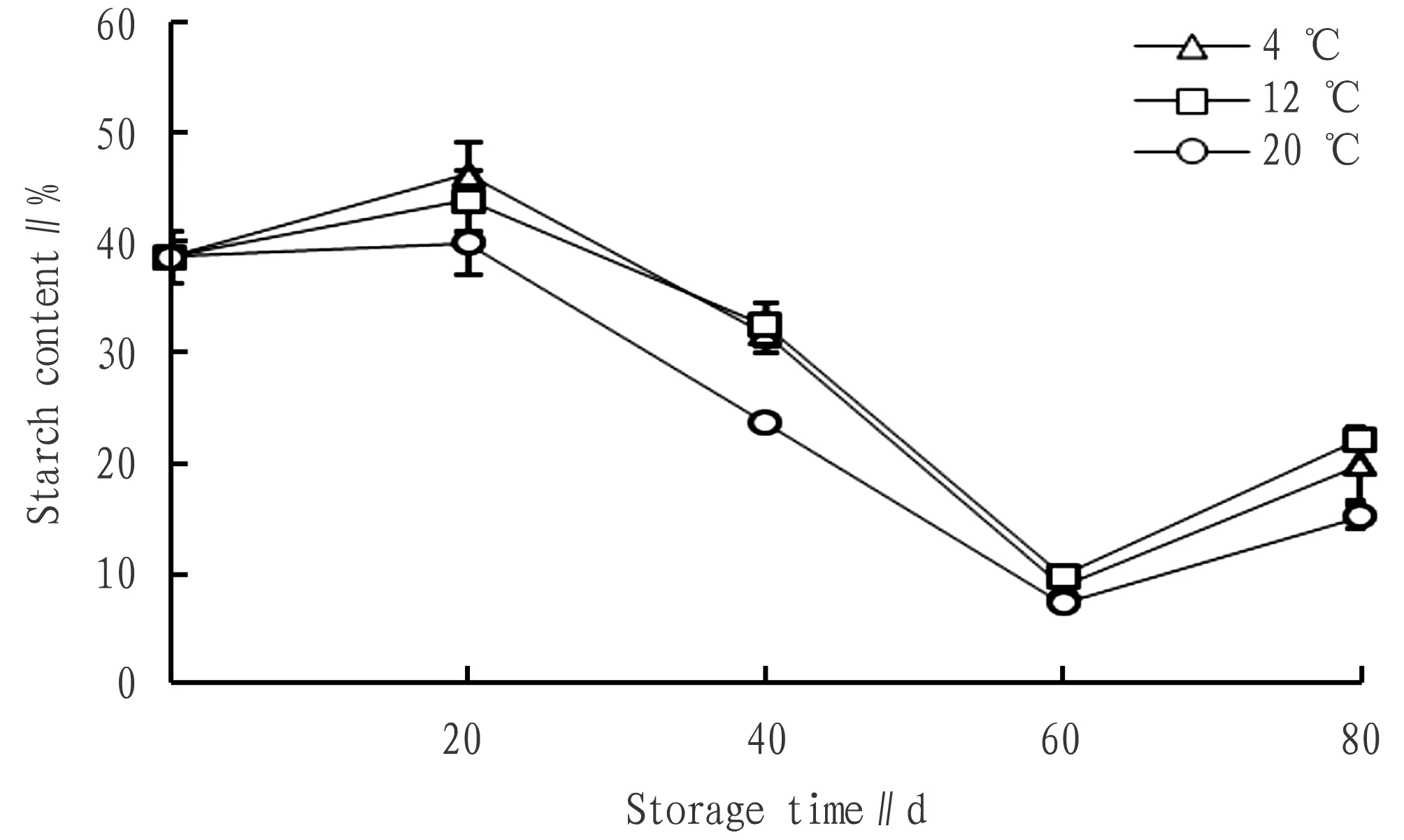
Fig.1 Effects of storage temperature on starch content of Amorphophallus bulbifer microbulb
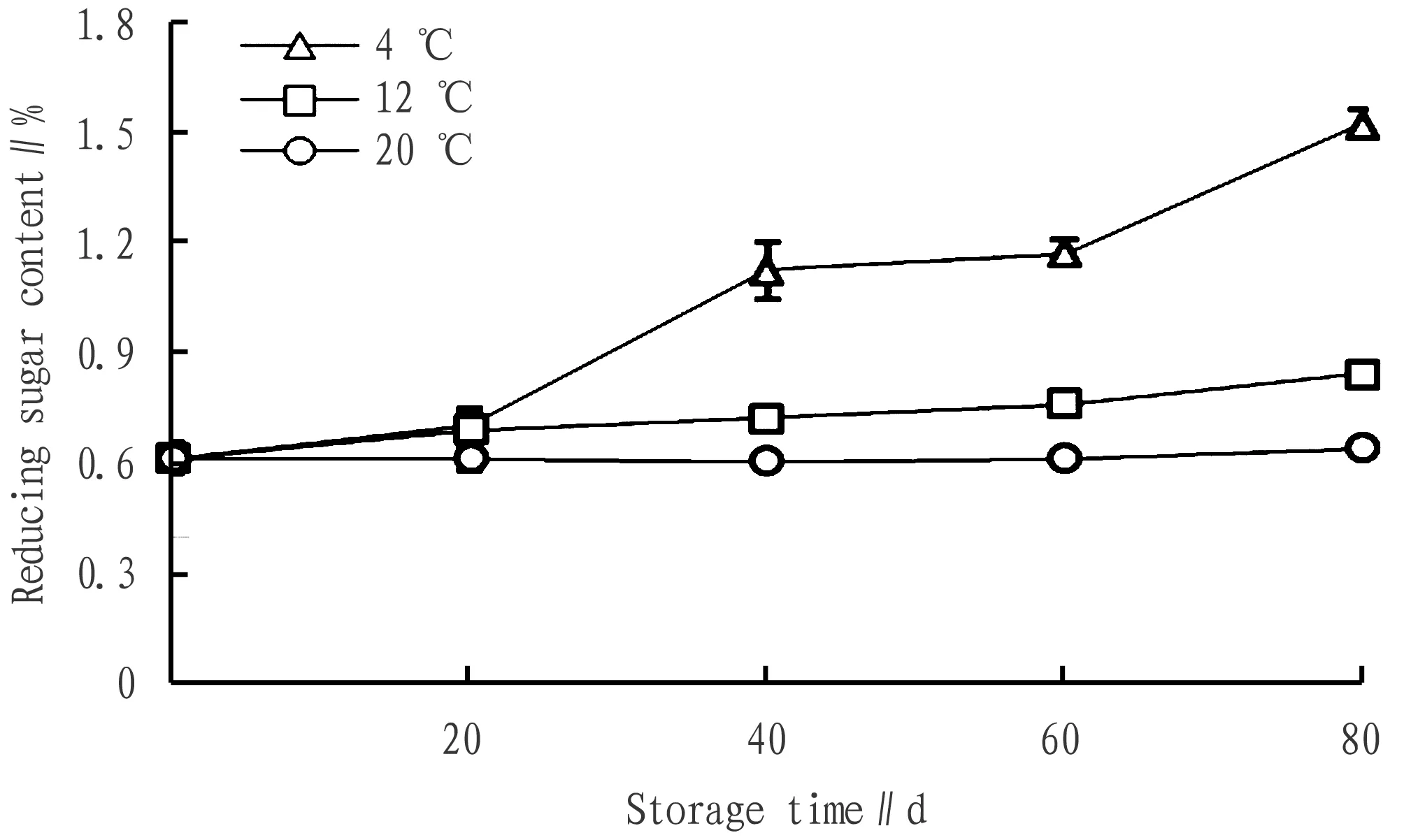
Fig. 2 Effects of storage temperature on reducing sugar content of Amorphophallus bulbifer microbulb
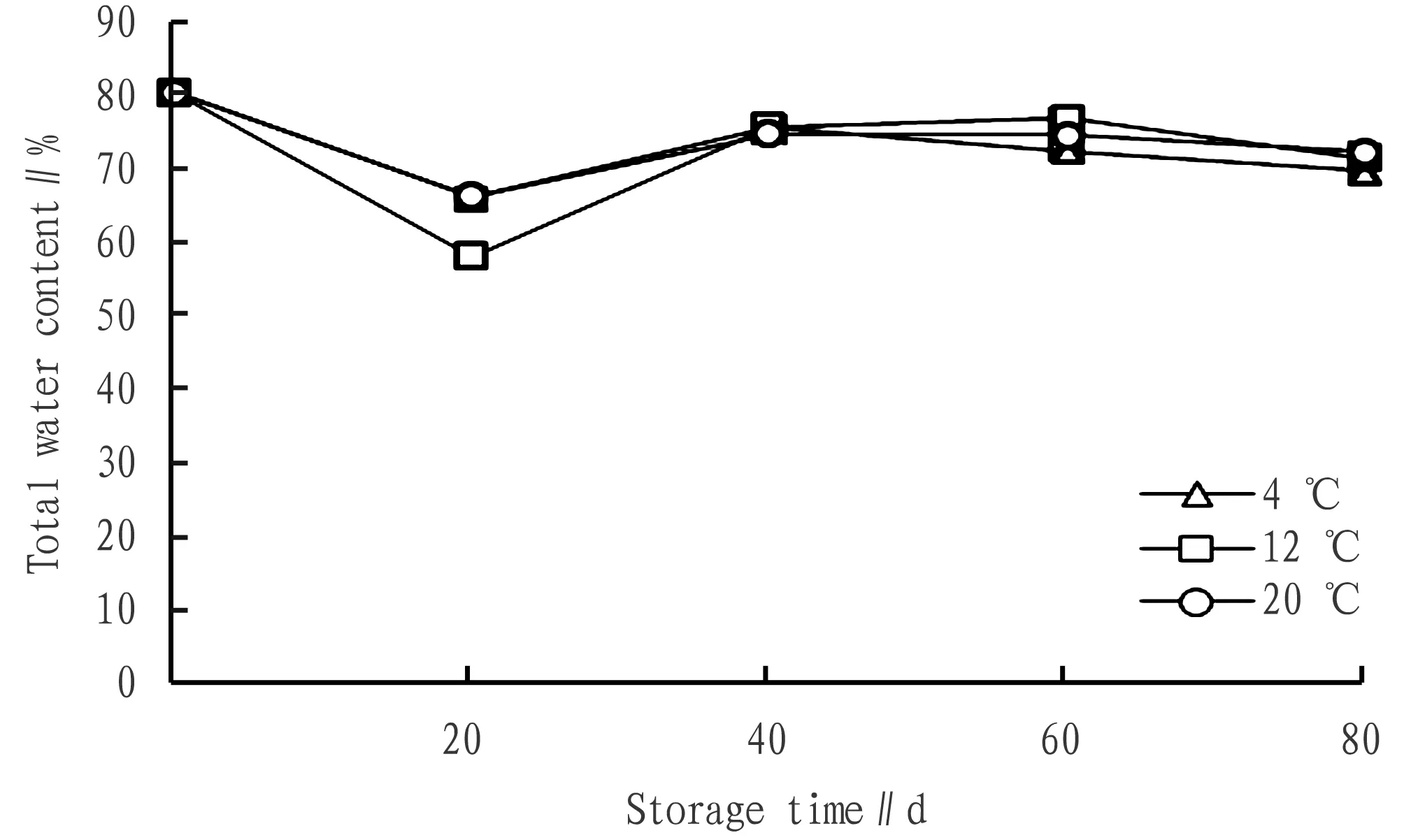
Fig.3 Effects of storage temperature on total water content of Amorphophallus bulbifer microbulb
3.3 Effects of storage temperature on POD activity
Peroxidase (POD) is an important respiratory enzyme in plants, which can jointly resist the damage of reactive oxygen species and hydrogen peroxide to cell membranes with superoxide dismutase (SOD) and catalase (CAT). As shown in Fig.5, the POD activity first increased then decreased during the storage period, and reached the peak at 60 d. The POD activity at 4 ℃ was significantly higher than those at 12 and 20 ℃, suggesting that low temperature improved the activity of POD, and reduced the cell membrane damage, thereby delaying the aging ofA.
cormifer
bulb.
Fig.4 Effects of storage temperature on specific gravity of free water of Amorphophallus bulbifer microbulb
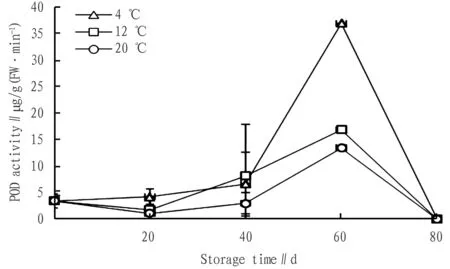
Fig. 5 Effects of storage temperature on POD activity of Amorphophallus bulbifer microbulb
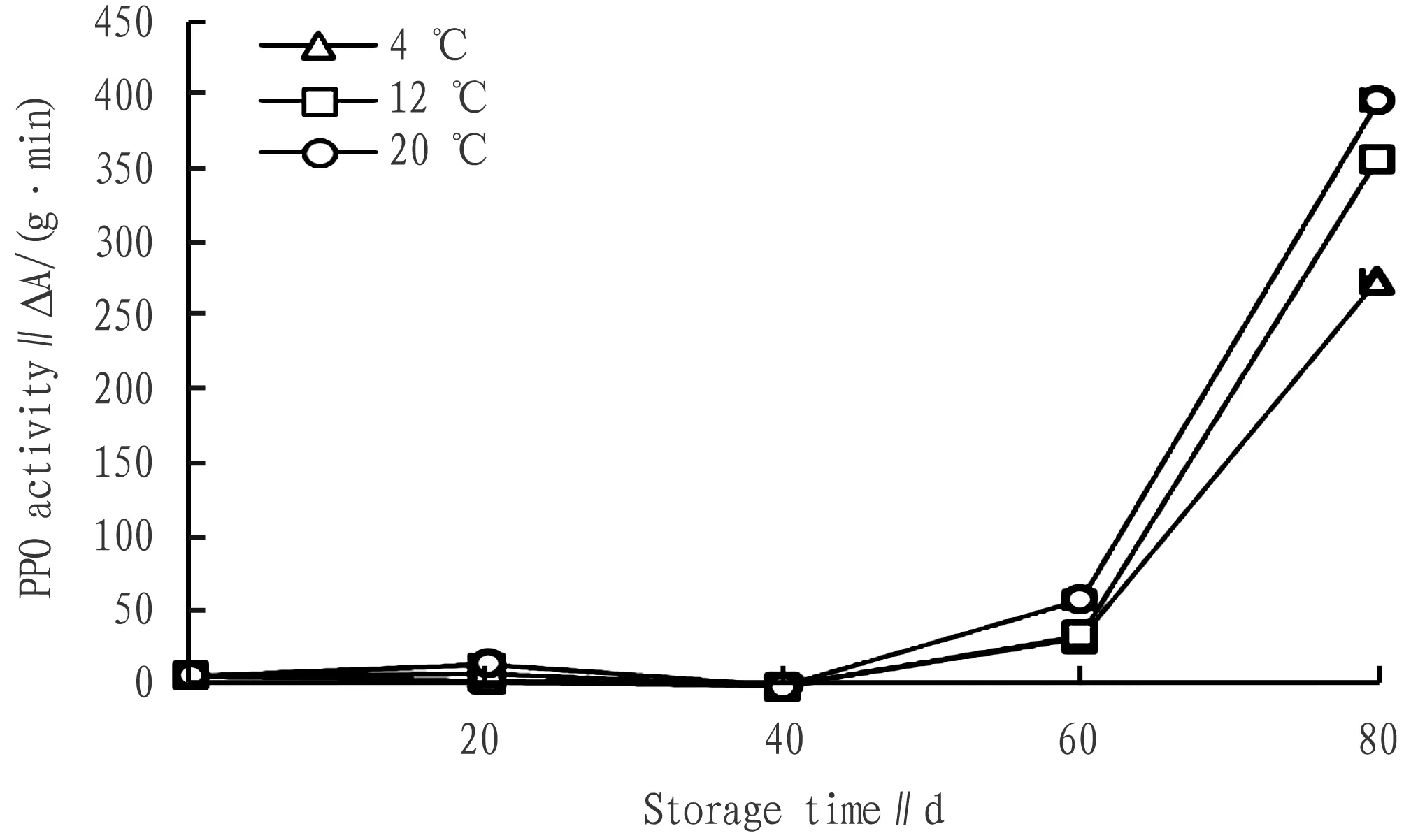
Fig.6 Effects of storage temperature on PPO activity of Amorphophallus bulbifer microbulb
3.4 Effects of storage temperature on PPO activity
A.
cormifer
contains high content of polyphenols, and polyphenol oxidase (PPO) can catalyze the decomposition of phenols, thus affecting the color of plant tissues and causing the browning of fruits and vegetables. Therefore, the phenolic oxidation of substances inA.
cormifer
could be understood by measuring the activity of PPO. As shown in Fig.6, the PPO activity in the bulb was very low at 40 d post storage, but began to increase after 40 d. At 80 d post storage, the PPO activity at 12 and 20 ℃ were significantly higher than that at 4 ℃ (P
<0.05), indicating that low temperature at 4 ℃ effectively inhibited the PPO activity, and reduced the decomposition of phenols in the bulb, thus reducing the browning of bulbs.4 Discussion
Storage temperature is an important factor affecting the storage quality of bulbs. Low temperature can inhibit the respiration rate of bulbs, thus reducing energy consumption and water loss. However, it can increase the activity of POD and reduce the activity of PPO.A.
cormifer
bulb provides energy for life activities through respiration. Starch, as a stored organic compound, can be converted into sugar in the bulb to provide energy. In this study, during the low temperature storage ofA.
cormifer
microbulbs, it was found that the metabolic pathway of starch and sugar in the bulbs would be affected by low temperature, leading to decomposition of a large amount of starch and accumulation of a large amount of reducing sugar, and resulting in low temperature saccharification. The increase of reducing sugar content is suitable for the storage of bulbs, which is consistent with the results obtained by Zhou Changyanin studying the physiological characteristics of potatoes under different storage conditions. Free water participates in various metabolic activities of plants, and the proportion of free water can directly reflect the dormancy degree of plants. Gao Chunyinget
al.
found a positive correlation between the free water proportion and dormancy break in studying the effect of cyanamide on winter bud moisture in grape dormancy. In this study, it was found that the specific gravity of free water at 4 ℃ was significantly lower than that at 12 and 20 ℃, indicating that low temperature storage could significantly inhibit the specific gravity of free water in bulbs, thus inhibiting the break of bulb dormancy.Seeds are prone to produce reactive oxygen species during germination. If they are not cleaned in time, protein cross-linking and membrane lipid peroxidation will occur, resulting in the destruction of cell membrane structure. POD is an important protective enzyme inA.
cormifer
bulb, which can timely clean up the hydrogen peroxide produced by metabolism to reduce the damage degree of cell membrane. The study found that the POD activity increased first and then decreased during the whole storage period, and the POD activity was higher at 4 ℃. Therefore, low temperature could effectively improve the activity of POD, and reduce the damage to cell membrane, thus delaying the aging ofA.
cormifer
bulb. This is consistent with the results of Tian Jiachunet
al.
and Yang Minget
al.
in studying the effects of different storage temperatures on physiological quality of potato.A.
cormifer
contains high content of polyphenols, which can inhibit germination of some seeds, while PPO can catalyze the decomposition of phenols and promote seeds to break dormancy. Our research results demonstrated that low temperature of 4 ℃ effectively inhibited the PPO activity, reduced the decomposition of phenolic substances in bulbs and inhibited the dormancy release ofA.
cormifer
bulb, which was consistent with the results of Chen Chaoet
al.
in studying the effect of storage temperature on PPO activity. Therefore, the low temperature of 4 ℃ is more conducive to the storage ofA.
bulbifer
microbulb, and the results also provides the theoretical basis for long-term storage ofA.
bulbifer
microbulb.杂志排行
Asian Agricultural Research的其它文章
- Research and Application Progress of Silk Fibroin Membranes
- Application Potential of Quinoa as Forage
- The Agriculture-Tourism Integration to Promote the Rural Revitalization: Taking Tea Industry-Agriculture-Tourism in Lishui City as an Example
- Delimitation of Grain Production Functional Zones: An Empirical Analysis of Fangzi District in Weifang City
- Research on the Curriculum Construction by Promoting Teaching Using Competition Based on Bloom’s Taxonomy of Educational Objectives
- Effects of Fermented Nano Chinese Herbal Medicines Replacing Antibiotics on Production Performance and Carcass Quality of Growing-Finishing Pigs
